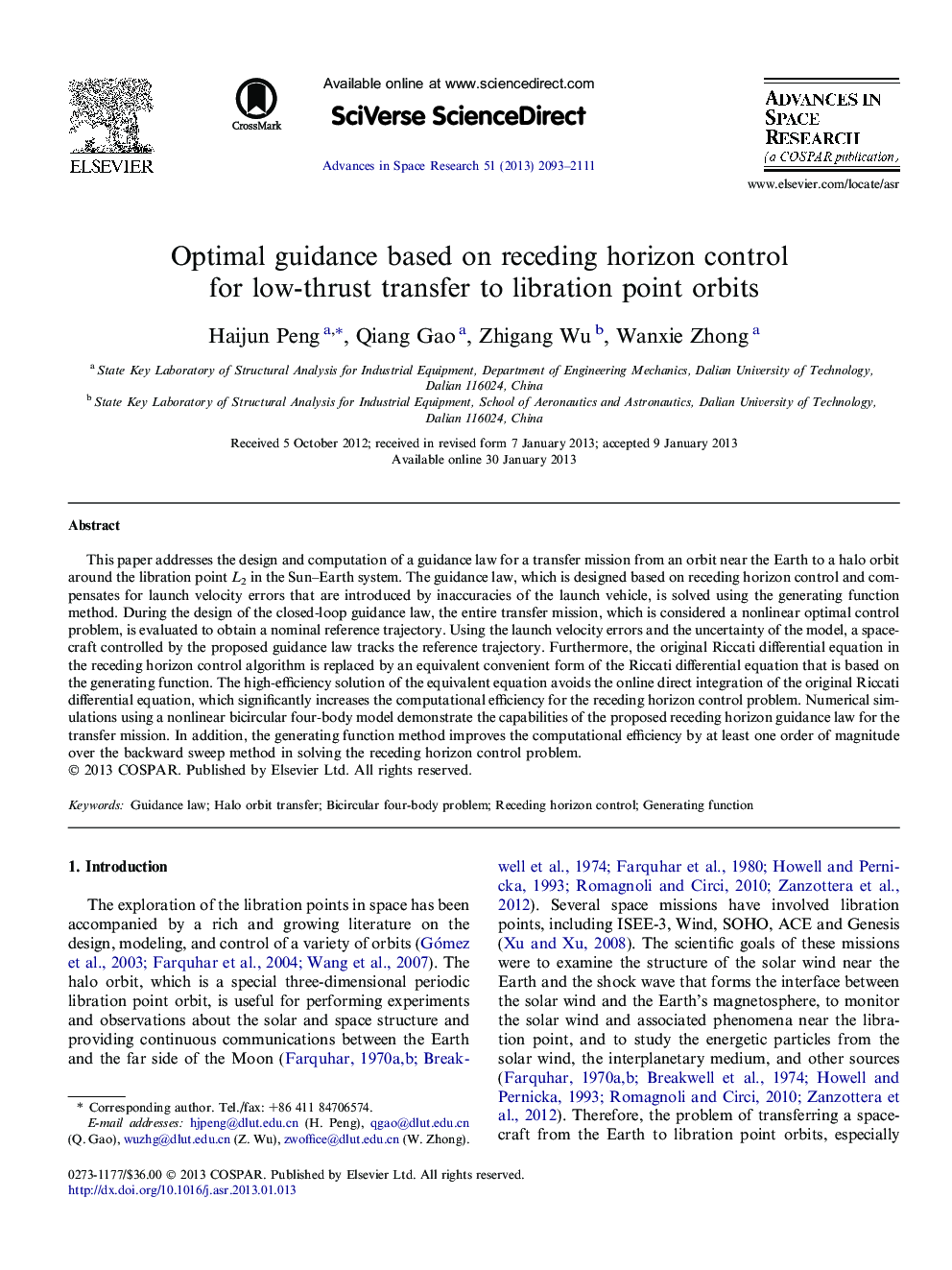| Article ID | Journal | Published Year | Pages | File Type |
|---|---|---|---|---|
| 1764828 | Advances in Space Research | 2013 | 19 Pages |
Abstract
This paper addresses the design and computation of a guidance law for a transfer mission from an orbit near the Earth to a halo orbit around the libration point L2 in the Sun-Earth system. The guidance law, which is designed based on receding horizon control and compensates for launch velocity errors that are introduced by inaccuracies of the launch vehicle, is solved using the generating function method. During the design of the closed-loop guidance law, the entire transfer mission, which is considered a nonlinear optimal control problem, is evaluated to obtain a nominal reference trajectory. Using the launch velocity errors and the uncertainty of the model, a spacecraft controlled by the proposed guidance law tracks the reference trajectory. Furthermore, the original Riccati differential equation in the receding horizon control algorithm is replaced by an equivalent convenient form of the Riccati differential equation that is based on the generating function. The high-efficiency solution of the equivalent equation avoids the online direct integration of the original Riccati differential equation, which significantly increases the computational efficiency for the receding horizon control problem. Numerical simulations using a nonlinear bicircular four-body model demonstrate the capabilities of the proposed receding horizon guidance law for the transfer mission. In addition, the generating function method improves the computational efficiency by at least one order of magnitude over the backward sweep method in solving the receding horizon control problem.
Related Topics
Physical Sciences and Engineering
Earth and Planetary Sciences
Space and Planetary Science
Authors
Haijun Peng, Qiang Gao, Zhigang Wu, Wanxie Zhong,
